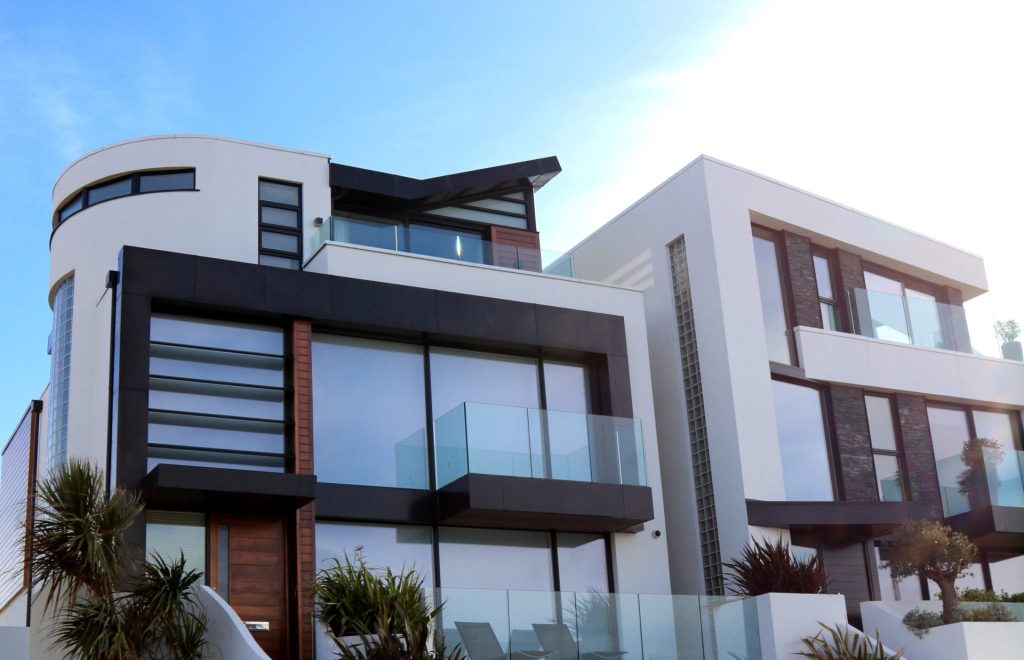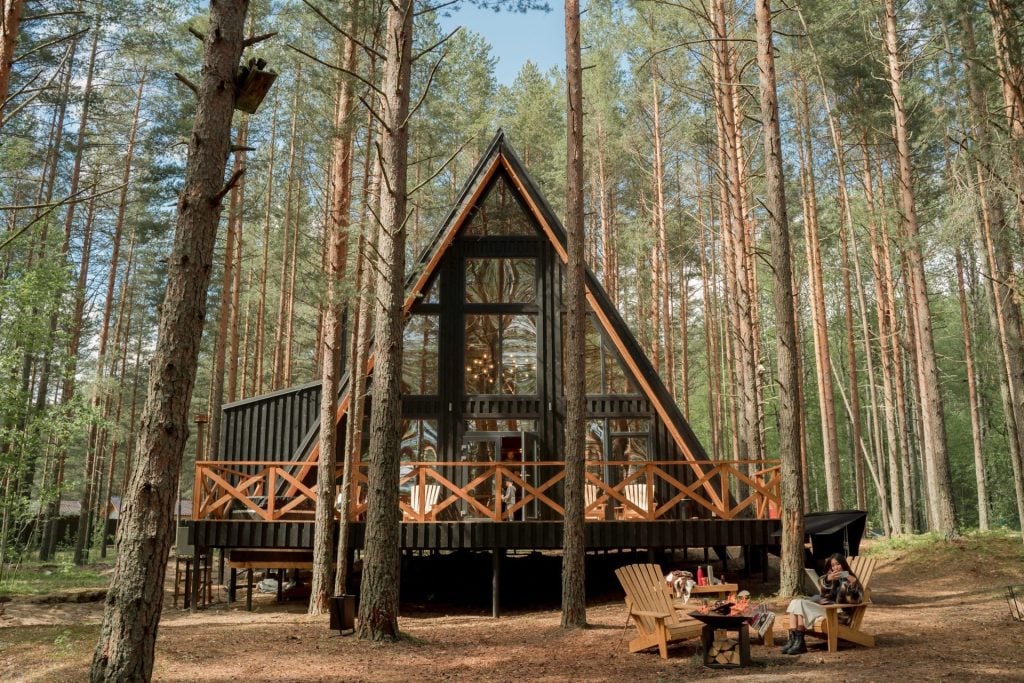BLOGS
The Cost of Owning a Glass House: What Factors Contribute to the Price Tag?
Glass houses have recently become a popular choice among high-end real estate buyers. They can enhance the home experience by creating a sense of enchantment, luxury, and convenience. The cost of owning such a house depends on many variables and often depends on the homeowner’s preferences. Here we list some factors that contribute to the price tag of owning a glass house.
The idea of owning a glass house has become a hallmark of luxury and modernity in architecture. The concept of luxury houses in the Philippines that is entirely enveloped in glass, from the walls to the roof, has captured the imagination of homeowners and architects alike. Glass houses offer a unique living experience, with natural light streaming in from every direction, creating a sense of openness and connection to the outdoors.
The transparency of the glass blurs the line between the interior and exterior, offering an unparalleled view of the surrounding environment. However, as with any luxury, owning a glass house has a significant price tag. Owning a glass house can be expensive, and it’s essential to understand the various factors contributing to this cost. In this blog, we will explore these factors in detail to provide a better understanding of the cost to build a glass house.
Design
The design of a glass home can vary widely depending on the homeowner’s preferences, and more complex designs can be more expensive to build. Intricate architectural features, customizations, and innovative structural elements may contribute to higher expenses in creating and maintaining such a residence. Complex designs with unique shapes or angles may require more custom glass fabrication, which can also add to the cost.

Modern Glass Houses
These houses are characterized by clean lines, simple shapes, and minimal ornamentation. They often feature large glass walls, open floor plans, and a focus on natural light. Examples include the Farnsworth House and the Glass House by Philip Johnson.
Greenhouses
These are structures designed for growing plants and vegetables. They are typically made entirely of glass to allow for maximum sunlight and often have a sloped roof to allow for rainwater runoff. One example includes the Palm House at Kew Gardens.
Conservatories
These are glass structures attached to a house and used as a sunroom or greenhouse. They often have a Victorian or Edwardian design, intricate details, and ornate features. Examples include the Winter Garden at the New York Botanical Garden and the Biltmore Estate Conservatory.
Glass Box Houses
These houses are designed to be simple and functional, emphasizing the view. They are typically rectangular and have large glass walls that provide a panoramic view of the surrounding landscape. Examples include the Glass Pavilion by Steve Hermann and the Glass House Mountains House by Bark Design Architects.
Passive Solar Houses
These houses are designed to maximize solar gain and minimize energy use. They often have large south-facing windows and are designed to be well-insulated. An example includes The Heliotrope by Rolf Disch.
Size of the glass
The larger the square footage, the more pricier it is to produce and install, which can increase the glass house’s overall cost.
In addition to the cost of the glass itself, the size of the glass can also impact the structural requirements of the home. Larger panes of glass require more support to ensure they are stable and secure, which can add to the project’s cost.
One of the factors to consider is the energy efficiency of the glass. Large panes of glass can allow more heat to enter the home, increasing cooling costs in the summer. However, there are solutions available to help mitigate this issue, such as using low-e glass or incorporating shading devices into the home’s design.

Installation
The installation of the glass plays a pivotal role in determining the overall cost of owning a glass house. The intricate and labor-intensive nature of the installation process can escalate expenses. Larger or intricately designed panels may necessitate specialized equipment and skilled labor while opting for high-end framing materials like steel or aluminum can further elevate costs compared to traditional alternatives.
In addition, the location of the glass households sways over the installation expenses. Remote or challenging-to-reach sites may demand extra time and resources for the glass installation. When allocating a budget for the installation of a glass house, one must duly factor in the cost of skilled labor essential for the proper and proficient installation of the glass panels.
Type of Glass
The selection of glass for glass houses encompasses a range of options, each with its associated cost. Factors such as the type of glass—such as tempered, laminated, or energy-efficient—and additional features like insulation or customization contribute to the varying price points.
Tempered Glass: This type of glass is often used in glass homes due to its strength and safety features. Tempered glass is heated and then cooled rapidly, making it much stronger than regular glass.
Laminated Glass: The production of laminated glass involves the process of interposing a layer of plastic between two glass sheets, forming a robust and resilient composite material. This construction method enhances the glass’s durability, strength, and resistance to breakage, making it a reliable choice for various applications, including glass houses.
Insulated Glass: Insulated glass is made by sandwiching two or more panes of glass together with a sealed air space in between. This type of glass is often used in glass homes for its energy efficiency. The sealed air space helps to reduce heat loss, making it easier to maintain a comfortable temperature inside the house.
Low-E Glass: Low-E glass is precisely engineered with a specialized coating that effectively reflects heat, making it an optimal choice for regions with extreme temperature variations. Its widespread use in glass homes stems from its remarkable energy efficiency. By effectively regulating heat transfer, this type of glass aids in maintaining a cool interior during summer and a warm one during winter, resulting in enhanced comfort and reduced energy consumption.
Tinted Glass: Tinted glass is a common choice for glass homes, serving multiple purposes. Its primary advantages include reducing glare, ensuring privacy, and mitigating the entry of excessive heat into the living space. These qualities contribute to a more comfortable indoor environment, especially during summer.
Final Thoughts
Now that you know the cost of owning a glass house, are you considering building one? If so, we hope our guide has given you a clear idea of what it will take to make your dream home come true.
We know that the thought of building a glass house can be overwhelming—but it doesn’t have to be! Brittany Corporation has an extensive network of trustworthy contractors ready to help you make your dream home. If you’re ready to experience luxury, you know we have them through our luxury real estate in Daang Hari Subdivisions and Forresta in Alabang.
If you’re ready for a luxury home experience unlike any other, contact us today!
What affects glass prices?
Various factors can influence how much should you pay when you plan to build a glasshouse. These include the type of glass, the size, and the level of customization required. High-end glass materials like low-e or tempered glass may be more costly than standard glass. Similarly, larger glass panels or custom shapes can also increase the cost of the glass. The glass cost can also be affected by the glass supplier’s location and the glass’s availability.
How do you calculate glass prices?
The calculation of glass price involves several factors. Firstly, the type of glass required for the project needs to be determined, as different types of glass have varying costs. The size and shape of the glass also play a significant role in the calculation of the price, as larger or custom-shaped glass panels tend to be more expensive. The level of customization required, such as tinting or frosting, can also increase the cost. The glass supplier’s location and the glass’s availability can also impact the price. Once all these factors are considered, the cost of labor involved in cutting, finishing, and installing the glass must also be considered.
Suggested Read: 10 Simple Ways To Contribute To Your Community
Suggested Read: Is Modern Glass House Design Worth Investing In
Suggested Read: Pros And Cons Of Glass Houses For Summer Living














